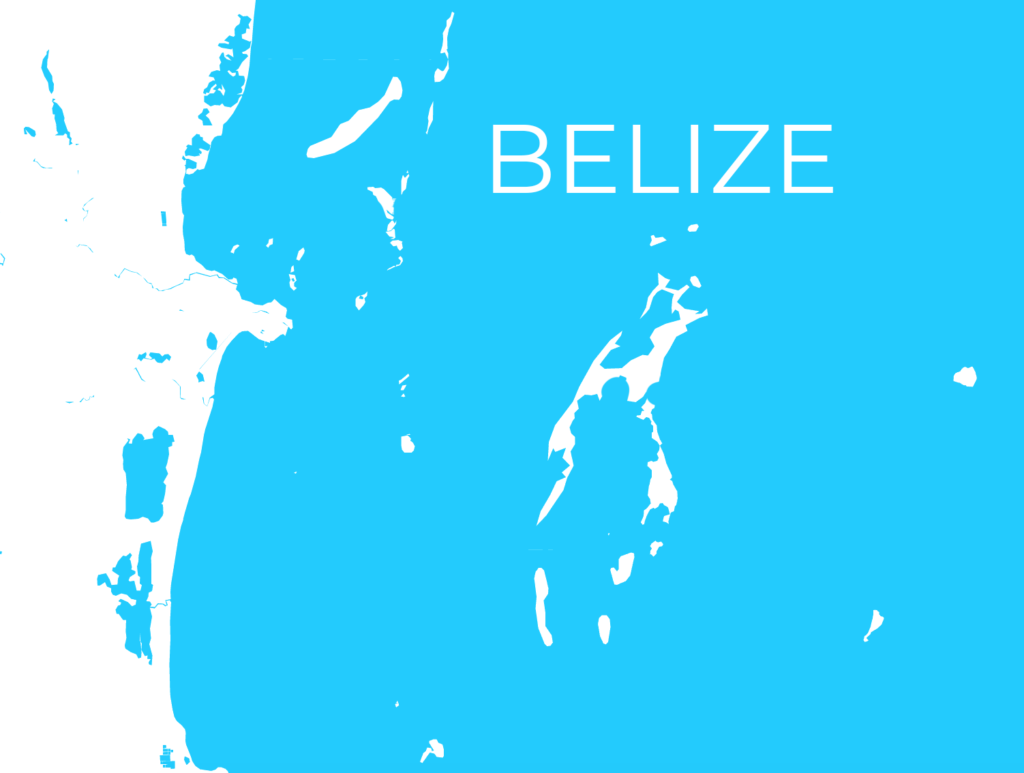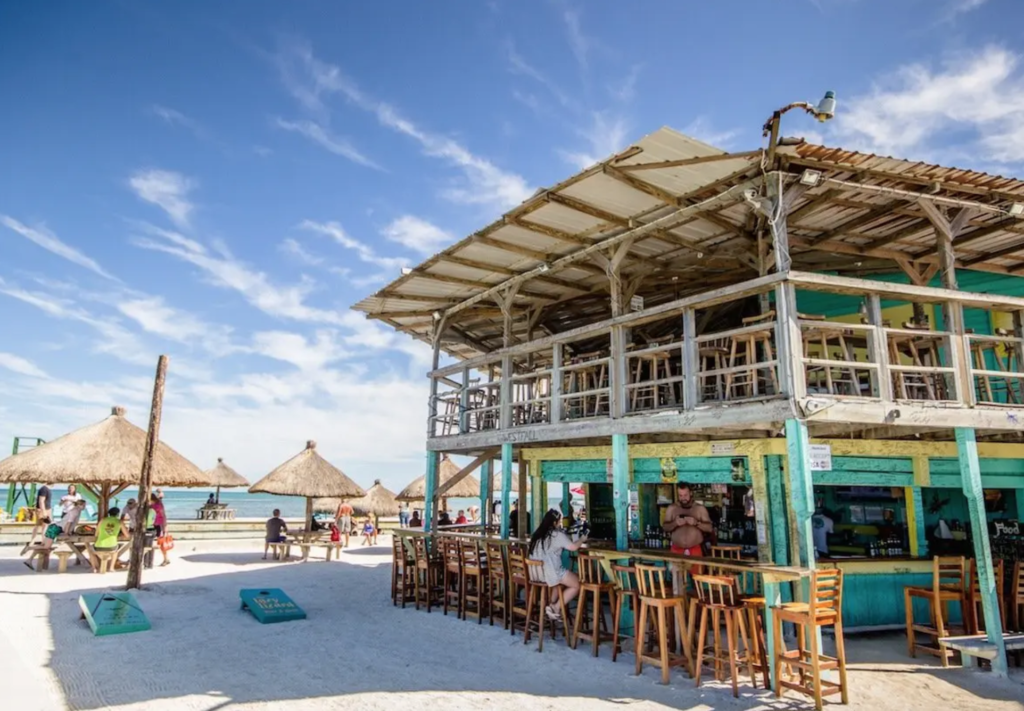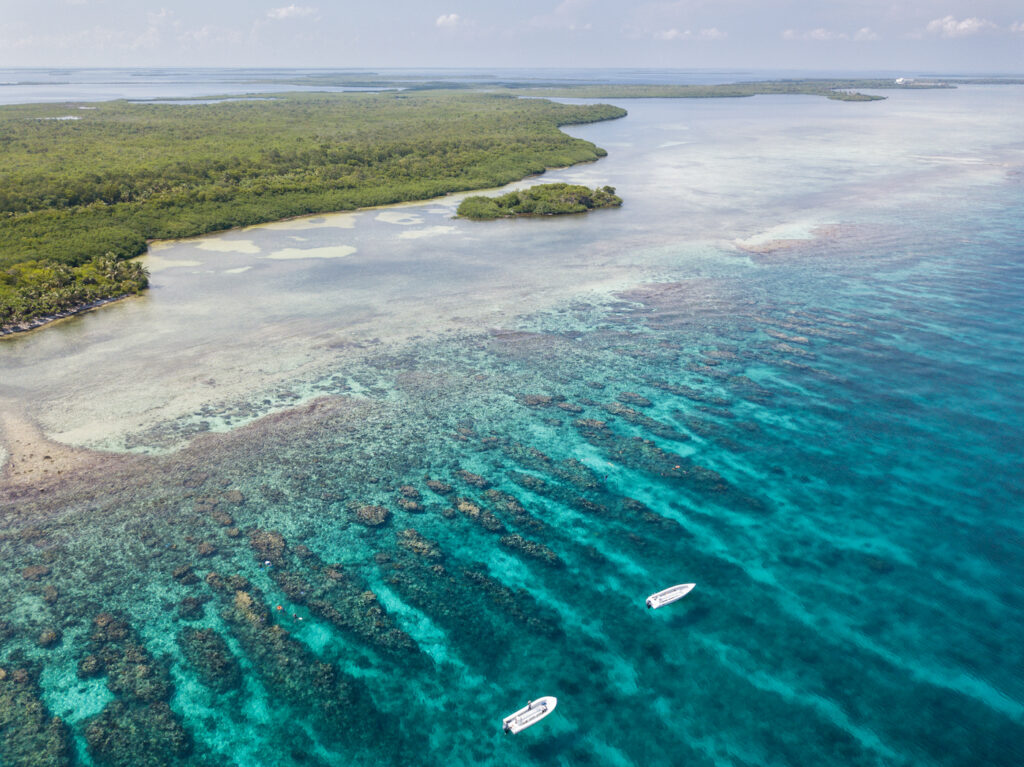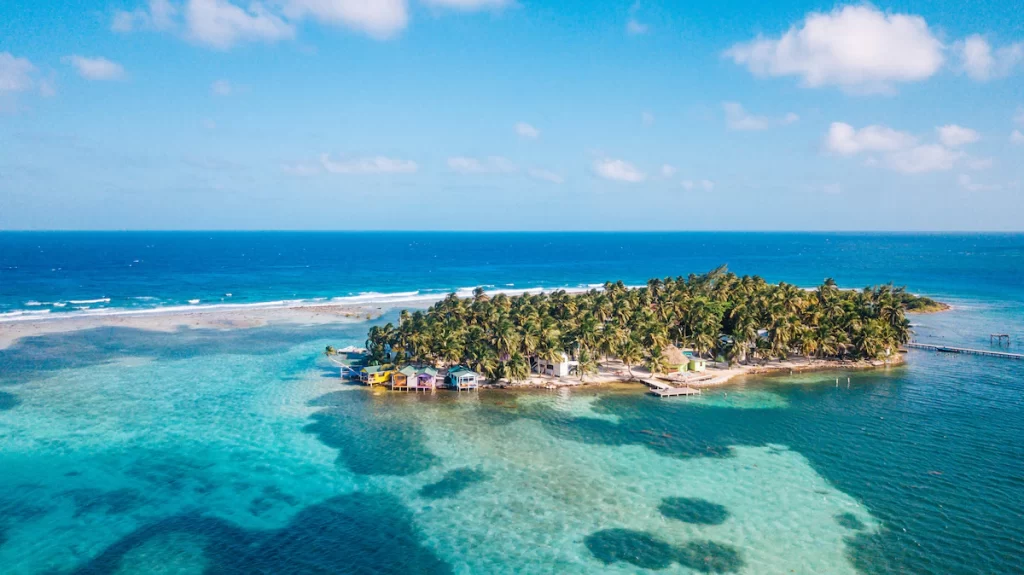HIGHLIGHTS





Get Your Bearings
Tucked between Mexico and Guatemala, Belize has been dubbed the jewel of Central America. Divers from all over the world come to Belize for a diving experience unlike anywhere else. With over 400 islands and cayes and miles of white sandy beaches, It’s also home to the largest barrier reef in the Northern Hemisphere and three of only four coral atolls in the Western Hemisphere.
The water at the reefs is some of the best in the world—crystal clear with visibility routinely extending hundreds of feet; you’ll always get the best view and diving experience. No matter what month you’re visiting, surround yourself with warm water and plenty of marine life to take in including corals, sharks, dolphins, turtles and stingrays.
Caye Caulker
Caye Caulker is a popular destination for scuba divers, snorkelers, anglers, and tourists who just want beach-oriented relaxation. Although in the past it was a sleepy fishing community, this fun-loving isle is today known more for its party and night life than diving or fishing. Nicknamed “The Split” for the slice of water bisecting the island, Caye Caulker is the perfect stop for a bicycle tour and Mango-Jalapeno Margaritas at the Lazy Lizard Bar before finishing the day with a swim in The Split.
Hol Chan Marine Reserve & Shark Ray Alley
Visit nearby Hol Chan Marine Reserve where the waters are crystal clear and the diving and snorkeling is unparalleled—as long as you don’t mind the hoards of sharks and rays stopping by for lunch.
Known fittingly as Shark Ray Alley, this popular dive and snorkel spot is a hotspot for docile nurse sharks and smaller rays. This place came to be not because of any feature of the environment, but because local fishermen used to come here to clean their catches, filling the waters with morsels that were perfect for the bottom feeding nurse sharks and rays. Soon the animals recognized that they could come here for a reliable meal and returned in droves.
In just 8 feet of water and near a cut to the outer reef, this is the perfect spot for underwater photography, freedive practice, and endless snorkeling.
Turneffe Atoll
Turneffe Atoll is renowned as a uniquely developed barrier reef structure and a biodiversity hotspot. Although it can be viewed as an isolated natural structure, it actually forms part of the Mesoamerican Reef, which runs for over 600 miles along the Caribbean coastlines of Belize, Guatemala, Honduras and Mexico. This huge reef structure is exceptionally diverse, with Turneffe Atoll being a particular highlight.
Biodiversity
Turneffe Atoll is an amazing biodiversity hotspot, with something new to see every time you dive or snorkel. That’s thanks to its status as a Marine Protected Area and the amazing variety of habitats that can be found there. With mangroves, coral reefs, seagrass beds and a mosaic of flats, creeks, and lagoons, it’s no surprise that Turneffe Atoll is one of the most abundant wildlife ecosystems in Belize, if not the entire Caribbean.
The Turneffe Atoll Marine Reserve is home to a staggering array of wildlife on land, in the air, and of course beneath the waves. In the lagoons there’s a great chance of spotting Antillean Manatees or American Saltwater Crocodiles, and while diving or snorkeling it’s common to see spotted eagle rays, turtles, great hammerhead, reef, and nurse sharks, huge grouper and snappers, or even one of the many pods of bottlenose dolphins which call Turneffe Atoll their home.
Diving
Turneffe Atoll offers unparalleled underwater diving experiences. There are enough dive sites to keep you busy for weeks, and a remarkable variety of habitats. These include everything from shallow seagrass beds to busy reefs and deep water drop offs. The shape of the Turneffe reefs means that shallow and deeper water can be found close to each other, making for a fascinating underwater landscape when you’re scuba diving Turneffe Atoll. Steep wall diving is a must-do activity at Turneffe.
The sinking of The Witconcrete (affectionately known as The Wit) in December 2021 has created one of the best wreck diving sites in Belize. The Wit was chosen for its large size (375 feet long), variety of accessible chambers and corridors, and above all for its unusual concrete structure, which makes it easier for coral to recruit to the wreck. The Wit offers an amazing experience for divers, with opportunities to explore inside the ship via access hatches, and explore recesses where the anchor chains and molasses were stored. The profusion of marine life makes The Wit an especially rewarding dive, with excellent visibility in the crystal-clear, azure waters.
Lighthouse Reef
Some 50 miles southeast of Belize City is Lighthouse Reef Atoll, the most eastern of the atolls and the only atoll with an airstrip. Stretching 30 miles long and eight miles wide, the atoll boasts some of the best diving in Belize. The infamous Blue Hole sits in the middle of the atoll’s central lagoon, while gracing the southeast corner is the beautiful 45-acre Half Moon Caye Natural Monument, the country’s first national park. Home to five sand islands, several lighthouses, diverse marine habitats, crystal clear waters, and small rustic accommodations, Lighthouse Reef Atoll offers visitors the ideal island getaway.
The Great Blue Hole
The Great Blue Hole is one of the most famous diving sites in the world—an underwater sinkhole that researchers believe is the largest of its kind. The sinkhole originally formed as a limestone cave during the last glacial period, a time when sea levels were much lower. As the ocean began to rise, the cave system flooded and eventually collapsed, creating a “vertical cave” in the ocean.
Half Moon Caye
Half Moon Caye, named after its distinct crescent-shaped beach, is proud home to a large nesting colony of endangered, red-footed boobies. Truly a bird-watchers paradise, Half Moon Caye also hosts 98 other species of birds. A lookout tower was erected by the Belize Audubon Society in the middle of the nesting grounds, where visitors can observe the rare red-footed boobies in their natural habitat as well as uninterrupted views of many of the other species of birds inhabiting the island. The island is also famous for its superb diving. The popular Half Moon Caye Wall is a shallow drop-off beginning with huge nuggets of coral lying on a white sand bottom. A series of tunnels pierce the wall, and groupers along with eagle rays are often seen swimming in the blue.
Long Caye
Long Caye is a jungle-filled island in the southwestern part of Lighthouse Reef. It’s home to a small private dive resort and some of the best diving in Belize due to its location—nutrients are pushed westward by the prevailing winds and there are no lagoons of fresh or brackish water to challenge the reef’s development.
Glovers Reef & Southern Cayes
The distance from Belize City makes the southern part of Belize a less frequently visited destination and many of the islands here are virtually uncharted virgin territory—so southerly dive trips take a little more planning and creative organizing, but are well worth the effort. Divers up for the adventure will find all the reefs in the southeast feature dive sites abounding with shallow walls, fresh reefs and abundant pelagics.
Glover’s Reef
Named for pirate John Glover, Glover’s Reef is the most southern of the three offshore reef systems and features some spectacular dive sites. Deep channels coincide with dramatic rising pinnacles at the Glover’s Reef Marine Reserve. One of the most spectacular locations for marine biodiversity, not only for Belize but in the region, the calm waters of the atoll’s lagoon are home to at least three species of sea turtles, eight species of sharks and rays, hundreds of species of fish, including the endangered Nassau Grouper, and many different types of coral.
Gladden Spit & Silk Cayes Marine Reserve
The Gladden Spit & Silk Cayes Marine Reserve is located in the southern part of Belize and is 22 miles east of Placencia. It is a part of the Southern Belize Reef Complex, which also includes Laughing Bird Caye National Park, Sapodilla Cayes Marine Reserve, and South Water Caye Marine Reserve.
Gladden Spit is a feature formed from the southern reef making an almost ninety-degree turn. The underwater promontory is one of Belize’s most important spawning aggregation sites, attracting whale sharks and other deep-water species.
The Silk Cayes are a collection of three cayes that lie south of the Gladden entrance and are a pristine snorkeling and shallow reef diving destination. On a good day, visitors can witness an astonishing variety of marine wildlife, including sea turtles, rays, and sharks.
Tobacco Caye
Tobacco Caye is the perfect tropical getaway, a location unlike any other along the Barrier Reef.
This palm-fringed five-acre islet is part of the South Water Caye Marine Reserve, a 17,878-acre offshore wonderland for divers, snorkelers, and kayakers.
With a year-round population of only 30, the island is the perfect place to relax in a hammock and unplug from your busy life back home.
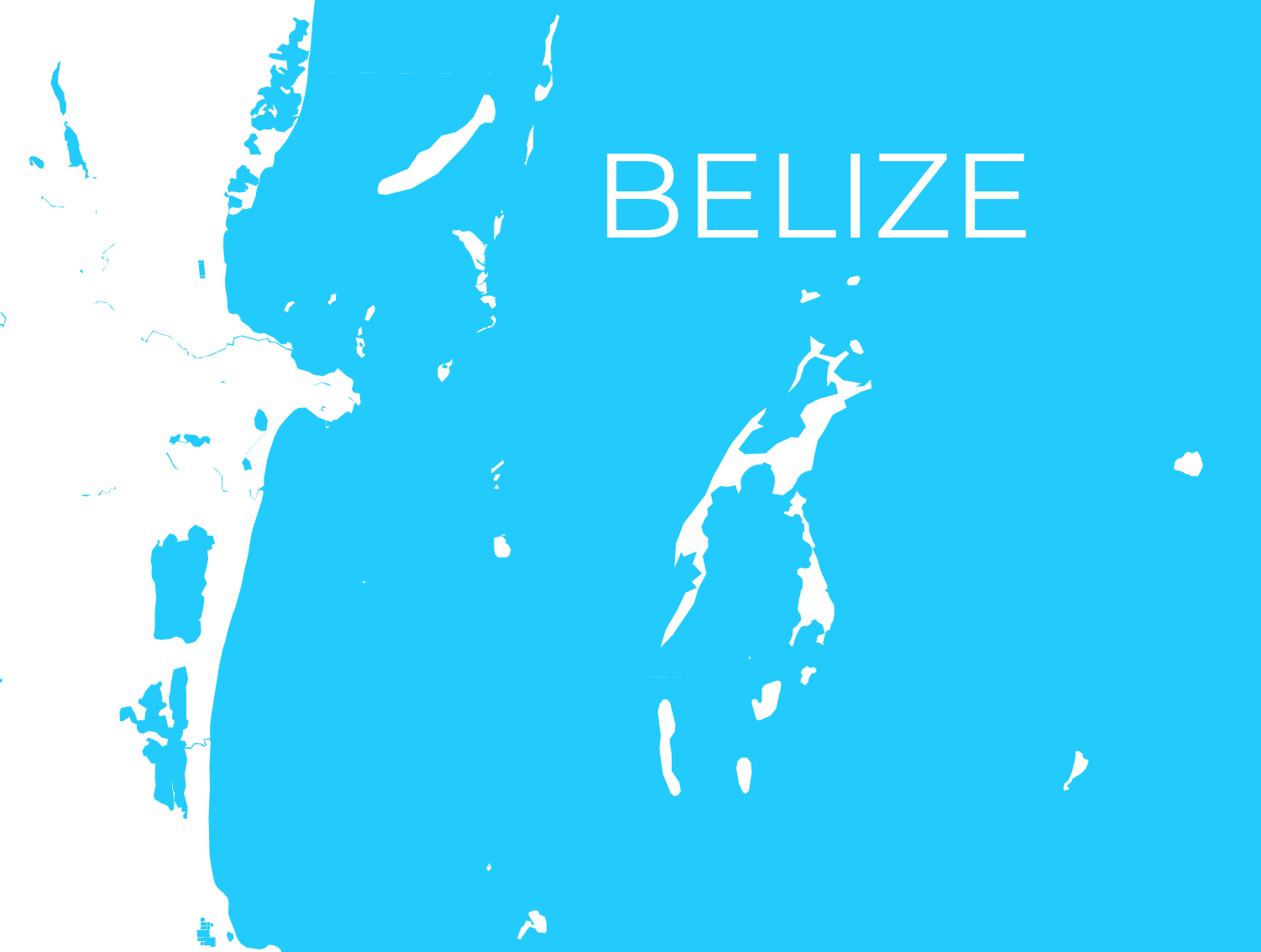
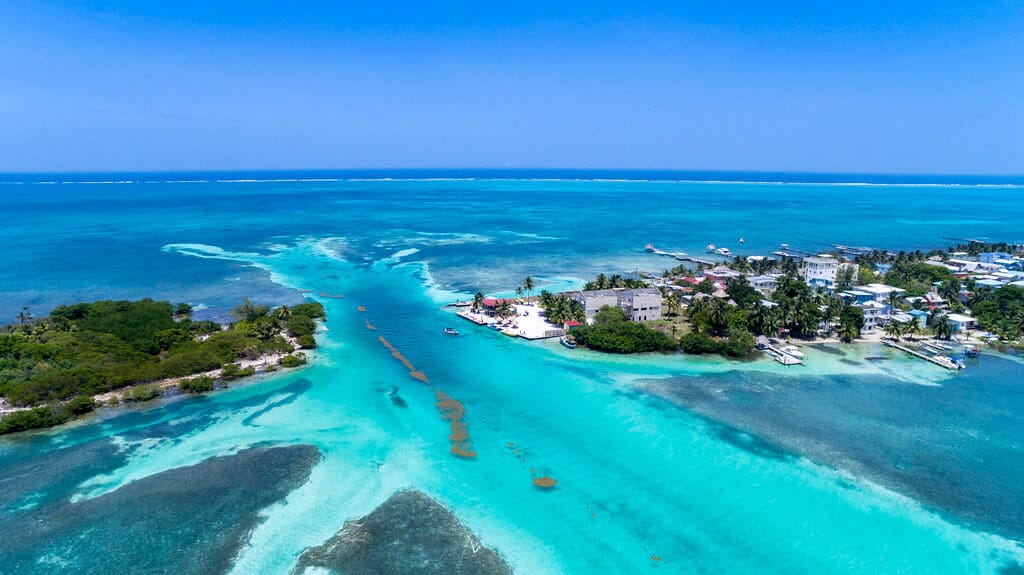
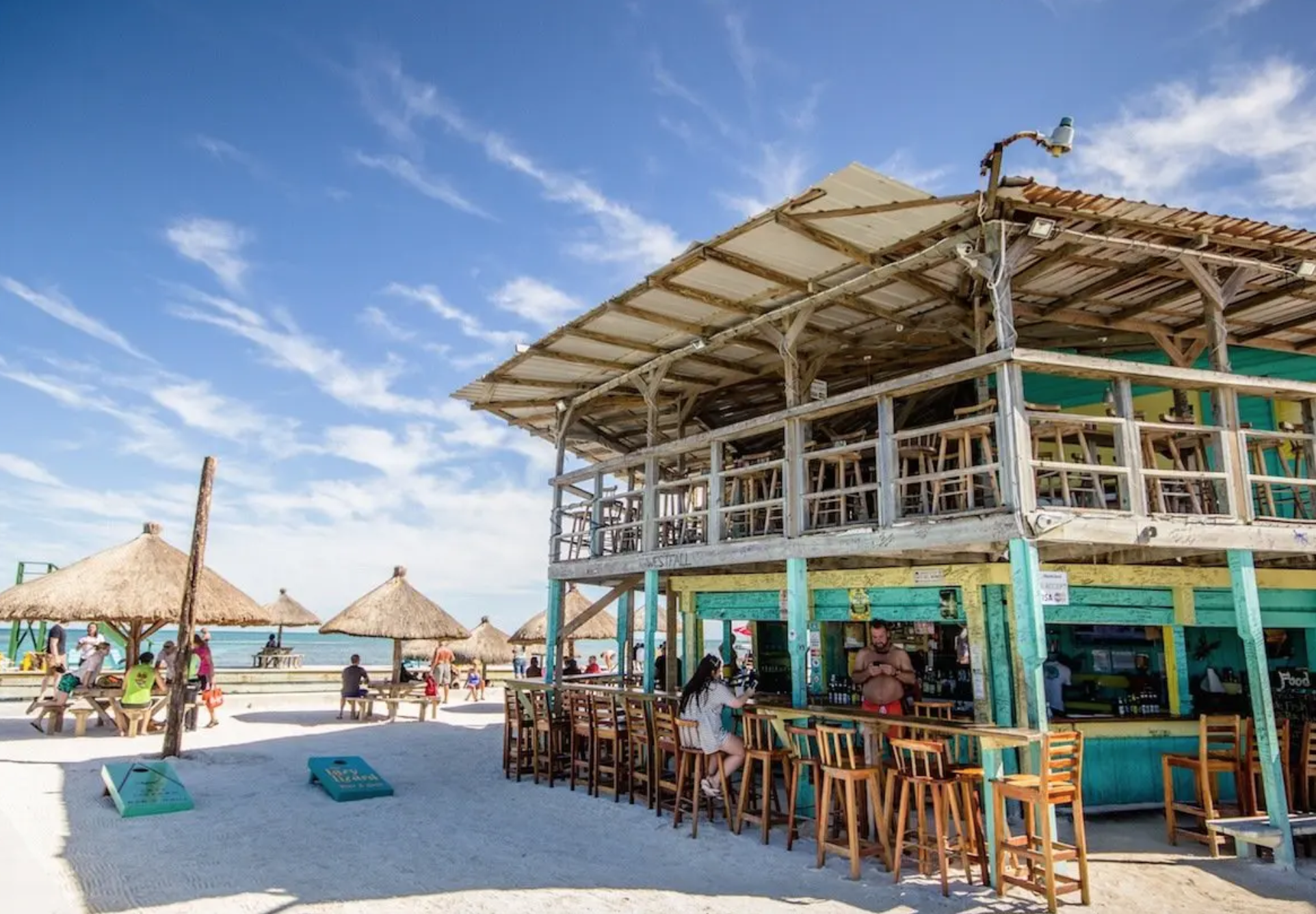
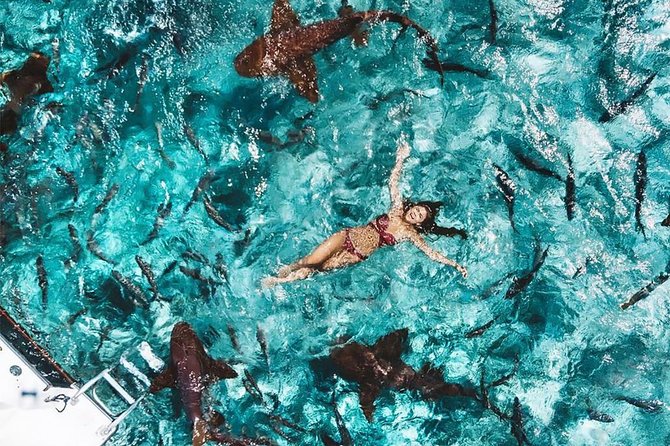
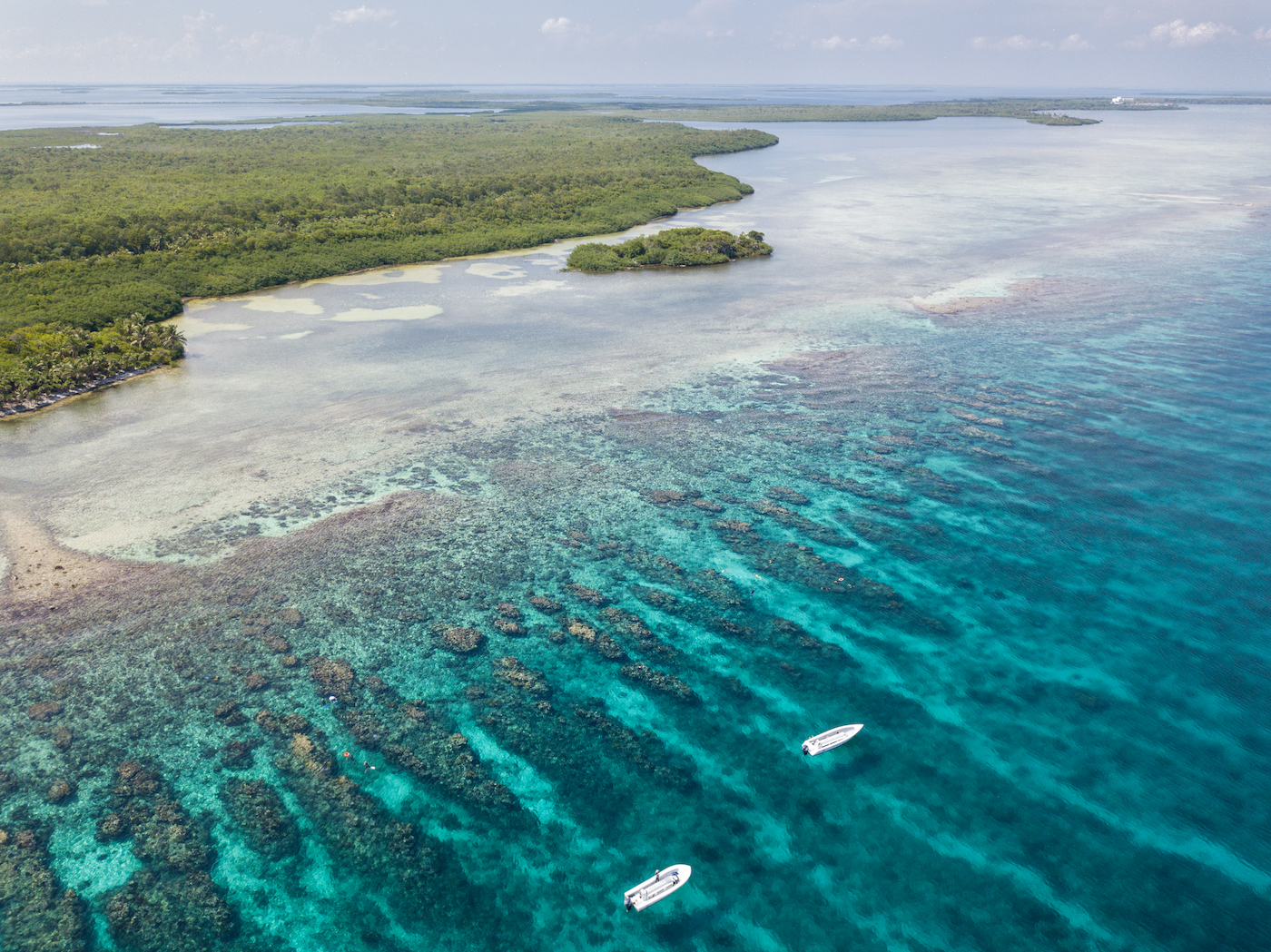

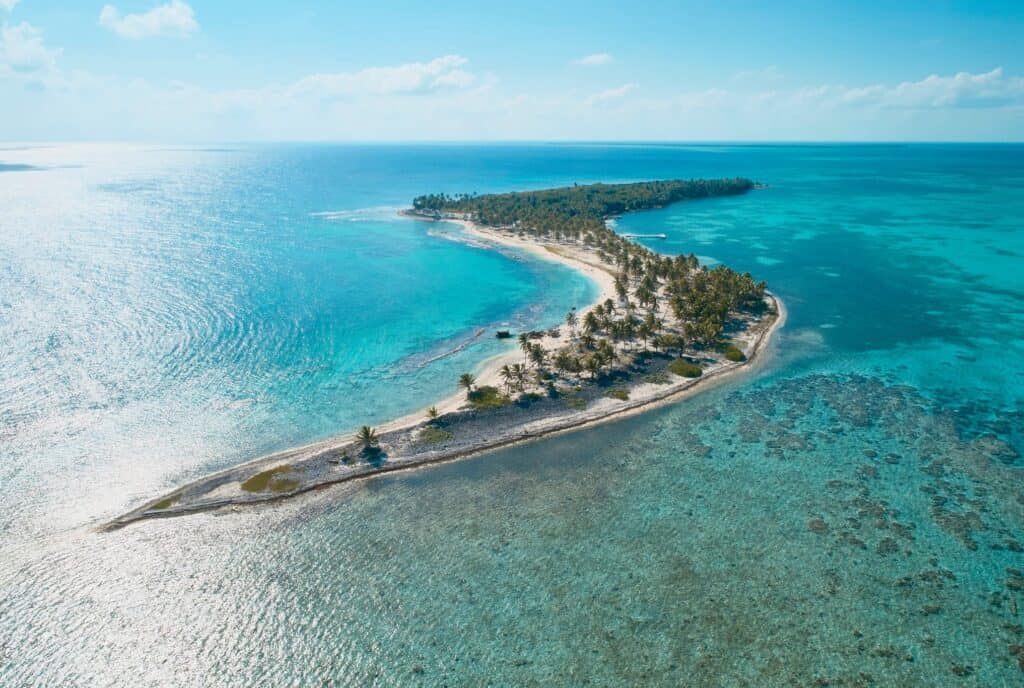
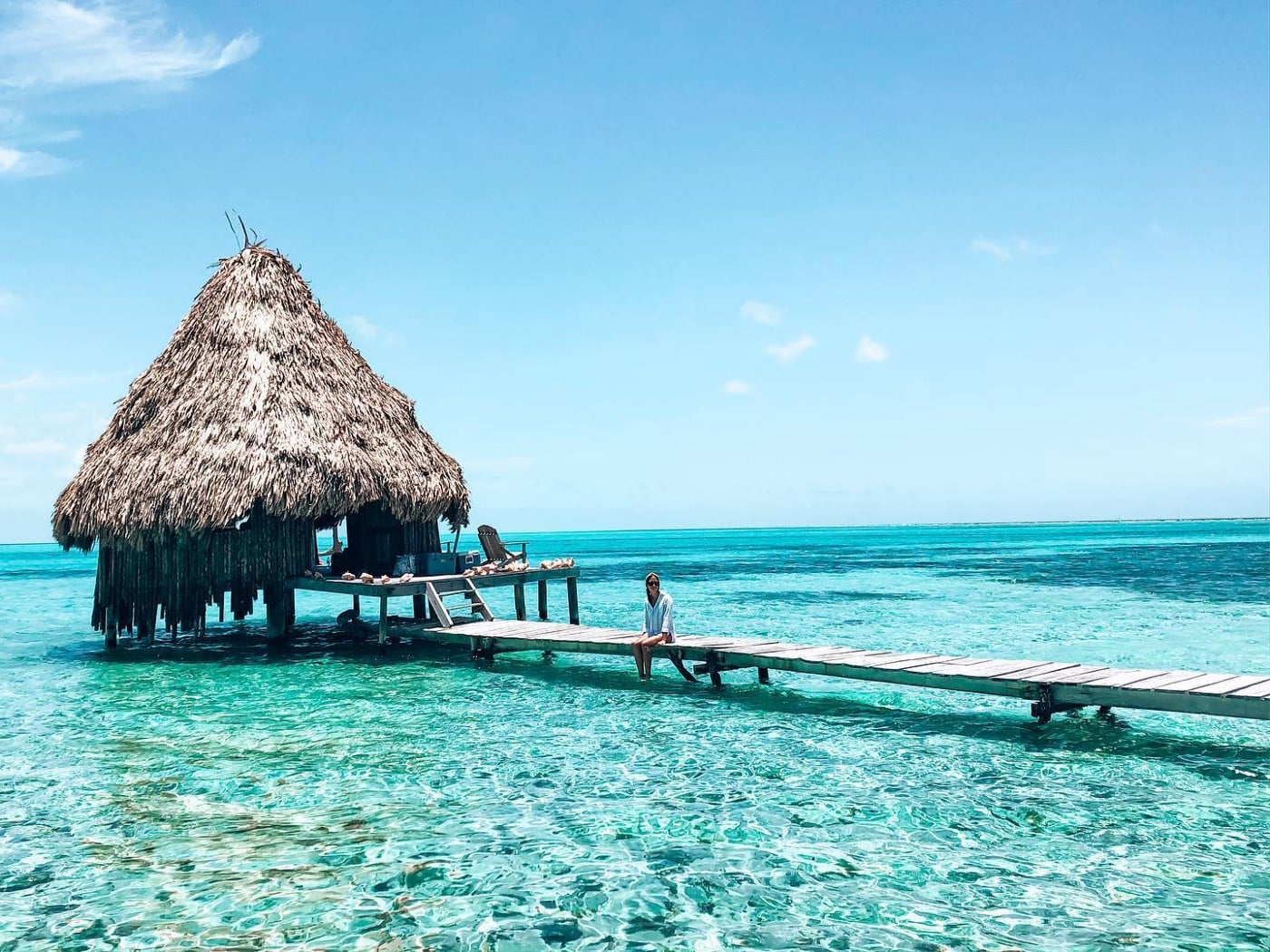
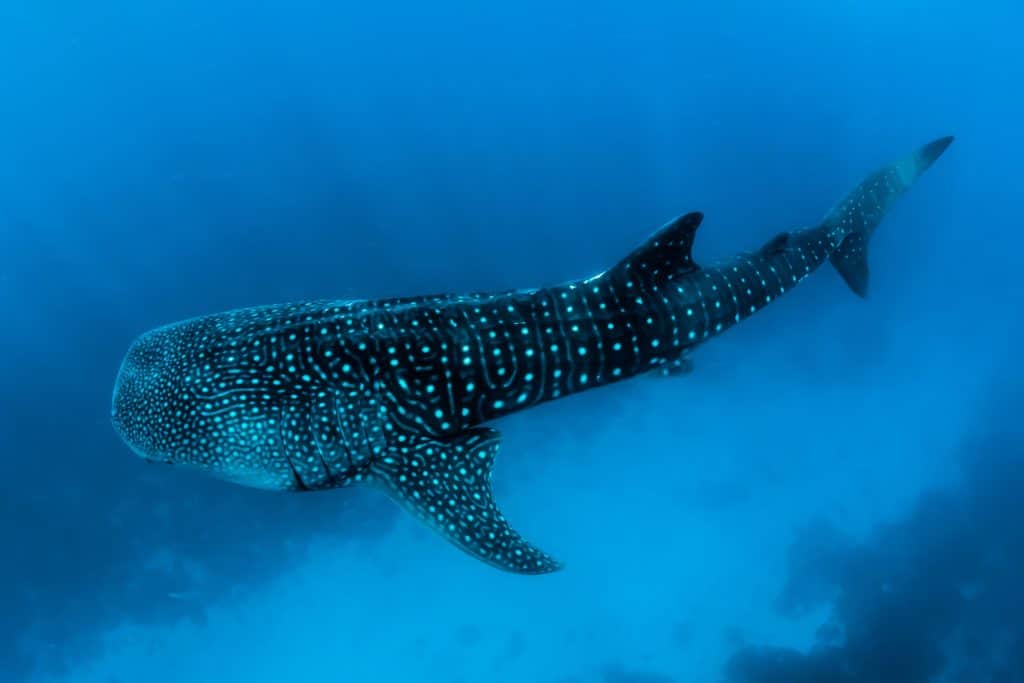
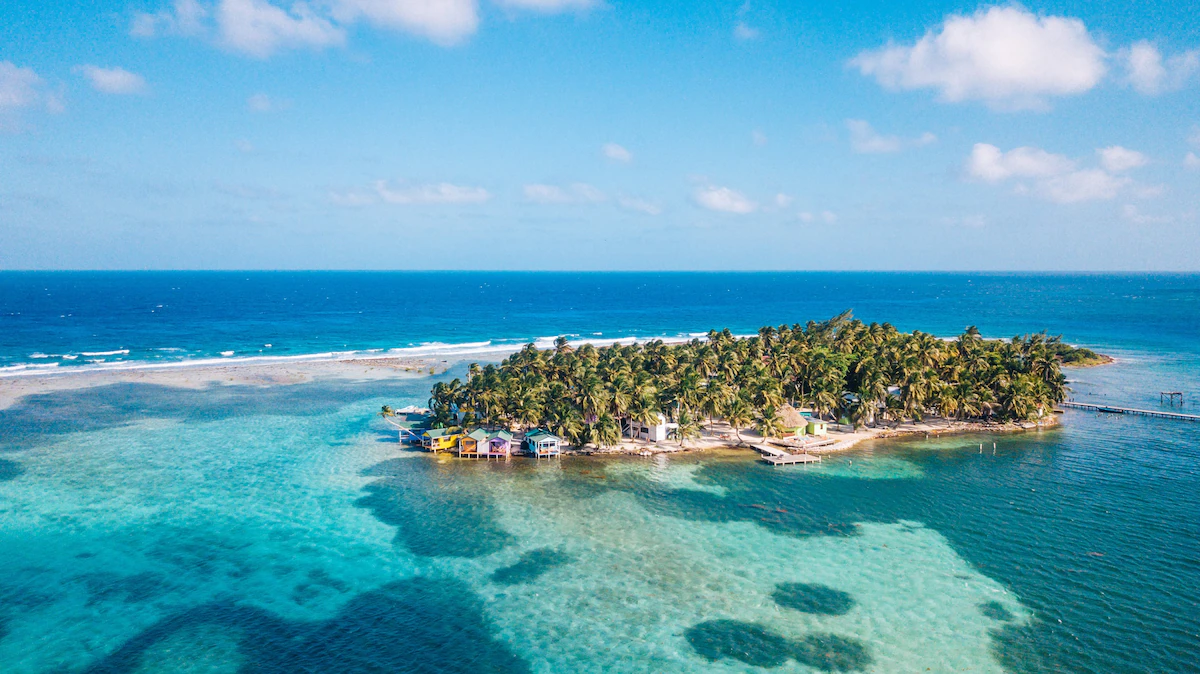
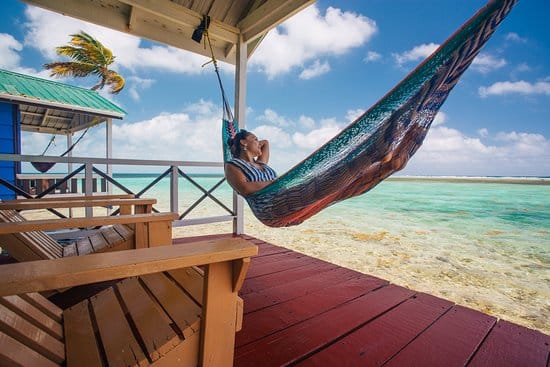
Get Your Bearings
Tucked between Mexico and Guatemala, Belize has been dubbed the jewel of Central America. Divers from all over the world come to Belize for a diving experience unlike anywhere else. With over 400 islands and cayes and miles of white sandy beaches, It’s also home to the largest barrier reef in the Northern Hemisphere and three of only four coral atolls in the Western Hemisphere.
The water at the reefs is some of the best in the world—crystal clear with visibility routinely extending hundreds of feet; you’ll always get the best view and diving experience. No matter what month you’re visiting, surround yourself with warm water and plenty of marine life to take in including corals, sharks, dolphins, turtles and stingrays.
Caye Caulker
Caye Caulker is a popular destination for scuba divers, snorkelers, anglers, and tourists who just want beach-oriented relaxation. Although in the past it was a sleepy fishing community, this fun-loving isle is today known more for its party and night life than diving or fishing. Nicknamed “The Split” for the slice of water bisecting the island, Caye Caulker is the perfect stop for a bicycle tour and Mango-Jalapeno Margaritas at the Lazy Lizard Bar before finishing the day with a swim in The Split.
Hol Chan Marine Reserve & Shark Ray Alley
Visit nearby Hol Chan Marine Reserve where the waters are crystal clear and the diving and snorkeling is unparalleled—as long as you don’t mind the hoards of sharks and rays stopping by for lunch.
Known fittingly as Shark Ray Alley, this popular dive and snorkel spot is a hotspot for docile nurse sharks and smaller rays. This place came to be not because of any feature of the environment, but because local fishermen used to come here to clean their catches, filling the waters with morsels that were perfect for the bottom feeding nurse sharks and rays. Soon the animals recognized that they could come here for a reliable meal and returned in droves.
In just 8 feet of water and near a cut to the outer reef, this is the perfect spot for underwater photography, freedive practice, and endless snorkeling.
Turneffe Atoll
Turneffe Atoll is renowned as a uniquely developed barrier reef structure and a biodiversity hotspot. Although it can be viewed as an isolated natural structure, it actually forms part of the Mesoamerican Reef, which runs for over 600 miles along the Caribbean coastlines of Belize, Guatemala, Honduras and Mexico. This huge reef structure is exceptionally diverse, with Turneffe Atoll being a particular highlight.
Biodiversity
Turneffe Atoll is an amazing biodiversity hotspot, with something new to see every time you dive or snorkel. That’s thanks to its status as a Marine Protected Area and the amazing variety of habitats that can be found there. With mangroves, coral reefs, seagrass beds and a mosaic of flats, creeks, and lagoons, it’s no surprise that Turneffe Atoll is one of the most abundant wildlife ecosystems in Belize, if not the entire Caribbean.
The Turneffe Atoll Marine Reserve is home to a staggering array of wildlife on land, in the air, and of course beneath the waves. In the lagoons there’s a great chance of spotting Antillean Manatees or American Saltwater Crocodiles, and while diving or snorkeling it’s common to see spotted eagle rays, turtles, great hammerhead, reef, and nurse sharks, huge grouper and snappers, or even one of the many pods of bottlenose dolphins which call Turneffe Atoll their home.
Diving
Turneffe Atoll offers unparalleled underwater diving experiences. There are enough dive sites to keep you busy for weeks, and a remarkable variety of habitats. These include everything from shallow seagrass beds to busy reefs and deep water drop offs. The shape of the Turneffe reefs means that shallow and deeper water can be found close to each other, making for a fascinating underwater landscape when you’re scuba diving Turneffe Atoll. Steep wall diving is a must-do activity at Turneffe.
The sinking of The Witconcrete (affectionately known as The Wit) in December 2021 has created one of the best wreck diving sites in Belize. The Wit was chosen for its large size (375 feet long), variety of accessible chambers and corridors, and above all for its unusual concrete structure, which makes it easier for coral to recruit to the wreck. The Wit offers an amazing experience for divers, with opportunities to explore inside the ship via access hatches, and explore recesses where the anchor chains and molasses were stored. The profusion of marine life makes The Wit an especially rewarding dive, with excellent visibility in the crystal-clear, azure waters.
Lighthouse Reef
Some 50 miles southeast of Belize City is Lighthouse Reef Atoll, the most eastern of the atolls and the only atoll with an airstrip. Stretching 30 miles long and eight miles wide, the atoll boasts some of the best diving in Belize. The infamous Blue Hole sits in the middle of the atoll’s central lagoon, while gracing the southeast corner is the beautiful 45-acre Half Moon Caye Natural Monument, the country’s first national park. Home to five sand islands, several lighthouses, diverse marine habitats, crystal clear waters, and small rustic accommodations, Lighthouse Reef Atoll offers visitors the ideal island getaway.
The Great Blue Hole
The Great Blue Hole is one of the most famous diving sites in the world—an underwater sinkhole that researchers believe is the largest of its kind. The sinkhole originally formed as a limestone cave during the last glacial period, a time when sea levels were much lower. As the ocean began to rise, the cave system flooded and eventually collapsed, creating a “vertical cave” in the ocean.
Half Moon Caye
Half Moon Caye, named after its distinct crescent-shaped beach, is proud home to a large nesting colony of endangered, red-footed boobies. Truly a bird-watchers paradise, Half Moon Caye also hosts 98 other species of birds. A lookout tower was erected by the Belize Audubon Society in the middle of the nesting grounds, where visitors can observe the rare red-footed boobies in their natural habitat as well as uninterrupted views of many of the other species of birds inhabiting the island. The island is also famous for its superb diving. The popular Half Moon Caye Wall is a shallow drop-off beginning with huge nuggets of coral lying on a white sand bottom. A series of tunnels pierce the wall, and groupers along with eagle rays are often seen swimming in the blue.
Long Caye
Long Caye is a jungle-filled island in the southwestern part of Lighthouse Reef. It’s home to a small private dive resort and some of the best diving in Belize due to its location—nutrients are pushed westward by the prevailing winds and there are no lagoons of fresh or brackish water to challenge the reef’s development.
Glover's Reef & Southern Cayes
The distance from Belize City makes the southern part of Belize a less frequently visited destination and many of the islands here are virtually uncharted virgin territory—so southerly dive trips take a little more planning and creative organizing, but are well worth the effort. Divers up for the adventure will find all the reefs in the southeast feature dive sites abounding with shallow walls, fresh reefs and abundant pelagics.
Glover’s Reef
Named for pirate John Glover, Glover’s Reef is the most southern of the three offshore reef systems and features some spectacular dive sites. Deep channels coincide with dramatic rising pinnacles at the Glover’s Reef Marine Reserve. One of the most spectacular locations for marine biodiversity, not only for Belize but in the region, the calm waters of the atoll’s lagoon are home to at least three species of sea turtles, eight species of sharks and rays, hundreds of species of fish, including the endangered Nassau Grouper, and many different types of coral.
Gladden Spit & Silk Cayes Marine Reserve
The Gladden Spit & Silk Cayes Marine Reserve is located in the southern part of Belize and is 22 miles east of Placencia. It is a part of the Southern Belize Reef Complex, which also includes Laughing Bird Caye National Park, Sapodilla Cayes Marine Reserve, and South Water Caye Marine Reserve.
Gladden Spit is a feature formed from the southern reef making an almost ninety-degree turn. The underwater promontory is one of Belize’s most important spawning aggregation sites, attracting whale sharks and other deep-water species.
The Silk Cayes are a collection of three cayes that lie south of the Gladden entrance and are a pristine snorkeling and shallow reef diving destination. On a good day, visitors can witness an astonishing variety of marine wildlife, including sea turtles, rays, and sharks.
Tobacco Caye
Tobacco Caye is the perfect tropical getaway, a location unlike any other along the Barrier Reef.
This palm-fringed five-acre islet is part of the South Water Caye Marine Reserve, a 17,878-acre offshore wonderland for divers, snorkelers, and kayakers.
With a year-round population of only 30, the island is the perfect place to relax in a hammock and unplug from your busy life back home.
EXPLORE
Have a play around on this interactive map of our route to explore more places and activities available during our trip.
ACCOMMODATIONS
Accommodations include use of the following:
- 3 queen cabins, each with private ensuite bath with electric toilet, wash basin and separate shower stall. All cabins have ample storage, a panoramic window, air conditioning, two fans, US 110v outlets and dimmable recessed lighting.
- Social areas include an upper deck lounge with sectional couch and sunbed area with 360 degree view. Forward deck has spacious lounge area with adjustable reclining seating, trampoline and sunning areas. Aft deck offers lounge area plus alfresco dining. Salon offers lounge area with coffee table plus flat screen TV with many movies and USB capabilities.
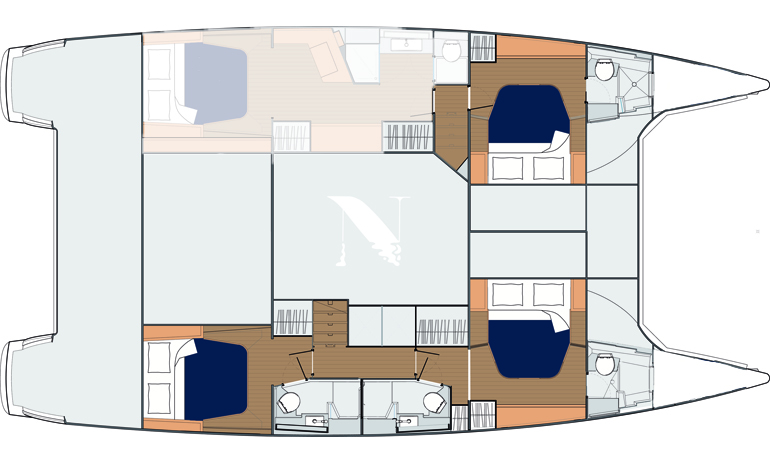
FYI
Flight info: Philip S. W. Goldson International Airport (BZE) in Belize City or Placencia Airport (PLJ)
Currency:
The Belize dollar (BZ$) is the official currency in Belize, and the official value is pegged at BZ$2 = US$1. The US dollar is also widely accepted.
Electricity: On board Neverland is US 110v
Communications: Neverland has on board wi-fi with high speed internet
We’ve got you covered: bath & beach towels, bedding, shower essentials, ScubaPro snorkel & dive gear, and dive lights
What to bring: soft-sided luggage, swimwear, sunscreen, beachwear, rain jacket, hat, sunglasses, music, books, camera, and personal snorkel/dive gear and wetsuit if you prefer
NEVERLAND CRUISES LLC
+1.305.912.SAIL
SAIL@NEVERLAND.CRUISES
SOCIAL
CONTACT
Send us a message below with thoughts or questions. Visit the contact page to inquire about a trip on Neverland.


